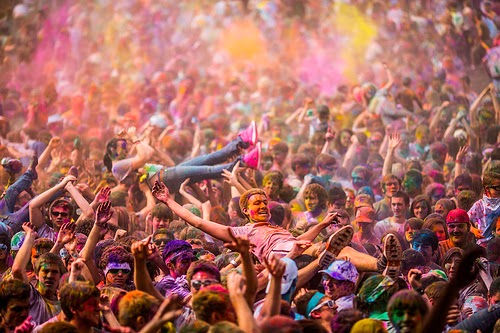“The gate of life swings to and fro,
And soon, too soon, it closes,
And that is why beside my doors,
I grew red roses.”
This quotation from the book ‘The rose-Its beauty and science’ is a
vivid expression of his personal philosophy. His life was a combination of
dignity, courtesy, compassion and love of beauty.
The man who saw
science behind the beauty of roses is Benjamin Peary Pal. He was not only the
father of Roses but also was the harbinger of green revolution in India.
Though Peary
Pal was born at Mukundpur, Punjab, on 26
th May, 1906. He spent his
early life in Burma. He was addicted to winning prizes and scholarships. He
passed his M.Sc. in botany from Rangoon University. In 1929, he left for
Cambridge to do research on wheat. When he returned to Burma with a
Ph.D.five years later, he was appointed
as Assistant Rice Research Officer at Central Rice Research Station at Himawbi.
In
1933, he came back to India as a second Economic Botanist at the Imperial Agricultural
Research Institute at Pusa in Bihar. He soon headed the botany division of the
Institute which is now Indian Agricultural Research Institution in New Delhi.
In 1950, he was appointed as the Director of the Institution. When Indian
Council of Agricultural Research(ICAR)
was recognized in 1965, Dr. Benjamin Peary Pal became its first Director
General.
In
the pre-independence and early post-independence days, there was not much
accent on agricultural research in India. A multitude of various diseases
destroyed the crops and the country had to depend on imports from affluent
countries to feed hungry mouths.
Pal
enters such a scenario. Rice and wheat are staple diet of the country and Pal
made a mental mission to develop new varieties of wheat which could resist
diseases. He gave a clarion call to search for new genes. The outcome was new
breed NP (New Pusa) 700 and NP 800 series, which could resist a certain type of
rust, a common form of disease killing wheat crops.
He
was not satisfied. After eighteen long years of conscientious research NP 809
was planted in 1954. It was a major breakthrough as variety could combat all
three types of rust and the curtain rose for green revolution. There was
applause all over the world for achievement of unassuming Indian scientist. That
was not end. He made extensive researches in potato and tobacco.
Benjamin
Peary Pal was never married though he known as the Father of Roses. He liked to
be remembered as a bachelor wedded to the roses. With his unparalleled works, he bred some of
the most beautiful varieties of roses named as – Dr. HomiBhabha, Delhi Princes,
Apsara, Banjaran, Dilruba, Homage etc. he developed about forty varieties of
roses. One of his most popular books is ‘The
Rose in India’. He was a founder member of Rose Society of India and
remained its President for several years.
Awards
and acclaim poured in with the Rafi Ahmed Kidwai Prize, the BirbalSahni Medal
and the Ramanujan Medal, IRF Gold Medal, Sir William Jones Medal and Sanjay
Gandhi Memorial Award. He was elected Fellow of the Roy
al
Society in 1972. He was the member of Education Commission of India and first
Chairman of the Government of India’s committee on Environment. He was also
President of Indian Botanical Society, Horticultural Society of India, Indian
Society of Genetics and Plant Breeding. He was the President of Indian National
Science Academy. However, nothing can match the admiration he received from the
farmers.
In
1946, he created a plant Exploration and Collection Unit within IARI. It is now
an independent ICAR Bureau, the NBPGR holding the 4
th largest
collection in the world. He has over 160 scientific publications and five books
to his credit
.
As
a role model for the scientific community, he brought research from labs to
farms. For over three decades, he shaped the course of research and
strengthened educational infrastructure. More than 30 scientists were awarded
Ph.D under his guidance.
He
was wedded to wheat, roses, bougainvillea and painting. The red roses, he grew
beside his door must have cried on 14th September 1989, when he left
them.
At
an early age, Benjamin Peary Pal was introduced to plants. His father, though a
physician, spent his spare time growing flowers and vegetables in their garden.
Once when he was tired he asked teenaged Pal to look after the garden. Pal not
only began to take care of plants but also started improving them after reading
books on gardening and seed catalogues. Plants became his lifelong friends.
Even in his seventies, he took care of them with affection as he did when he
was a boy.

















































